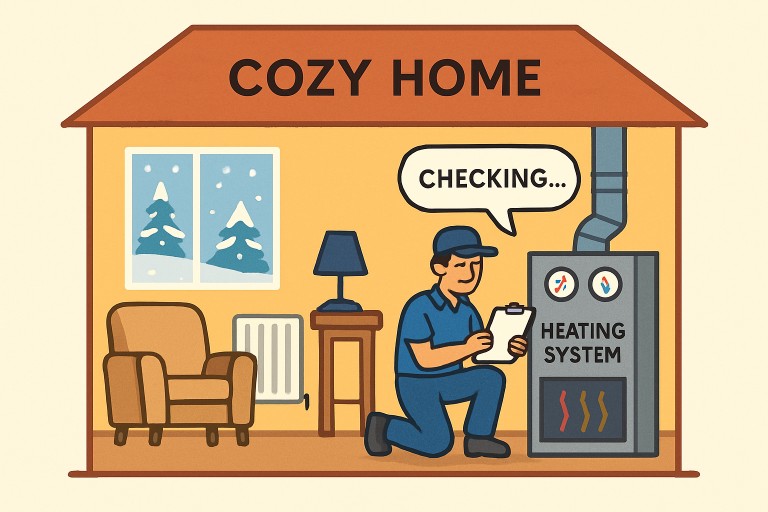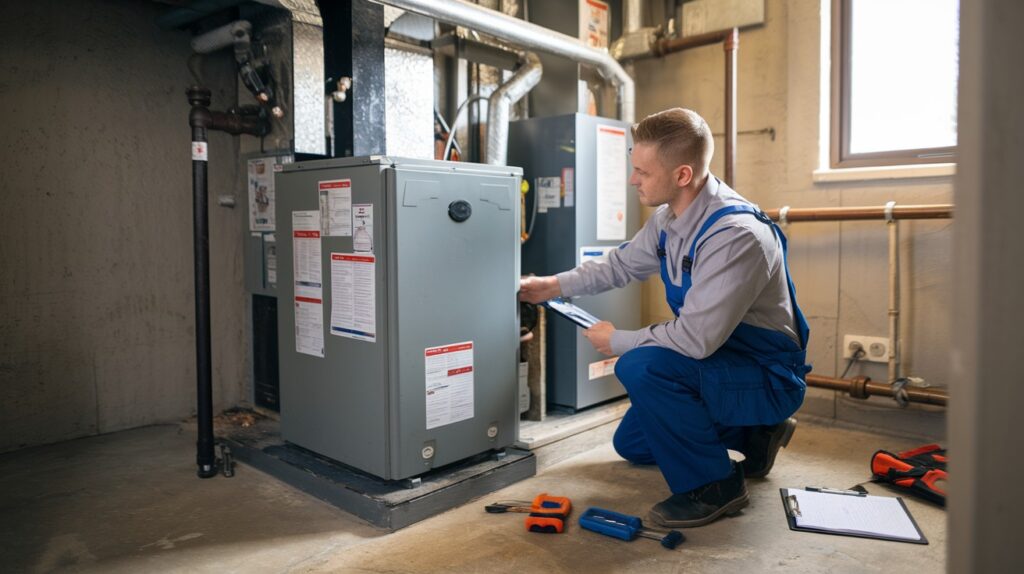- Annual heating inspections are critical for safety, efficiency, and system reliability.
- Inspections help identify potential hazards before they become emergencies.
- Regular checkups extend your system’s lifespan and improve indoor air quality.
- Maintaining your system protects your warranty and brings peace of mind during the winter.
As colder weather approaches, the reliability of your home’s heating system becomes a cornerstone of seasonal comfort and safety. Many homeowners overlook the critical steps involved in preparing their heating systems for winter, but annual inspections play a vital role in preventing emergencies, costly repairs, and dangerous situations. Arranging a professional inspection ensures your system works efficiently when you need it most and addresses both minor and major issues before they disrupt your home environment. If your system shows any signs of wear or underperformance, scheduling a furnace repair before winter sets in is a proactive way to maintain peace of mind and cozy comfort.
Aside from the obvious benefit of ensuring a warm home, annual heating inspections help avoid unexpected breakdowns and contribute to both energy savings and safety. A proactive approach shields your family from risks while lowering winter utility bills and preserving your investment in home comfort.
According to the U.S. Consumer Product Safety Commission, neglected heating equipment can present hazards ranging from fire to carbon monoxide leaks, both of which put families at serious risk. This makes early attention to your heating infrastructure a critical annual priority, thereby minimizing the risk of system failure or hazardous fumes. And with ongoing supply chain shifts occasionally delaying access to replacement parts, handling issues in advance is as practical as it is essential.
Enhancing Energy Efficiency

Homeowners should consider an annual inspection as an integral part of their home maintenance routine, similar to other yearly tasks that protect their property and loved ones.
Heating systems, especially those that rely on combustion, can become dangerous if not carefully maintained. Over time, wear and tear may lead to cracks or leaks that release toxic byproducts, such as carbon monoxide (CO). The U.S. Consumer Product Safety Commission has emphasized the importance of thorough pre-season inspections to prevent incidents of CO poisoning, fires, or other severe accidents. Symptoms of CO exposure, such as dizziness and headaches, can be mistaken for common illnesses, making annual safety checks a non-negotiable part of your home’s maintenance.
An annual inspection helps your heating system operate at maximum efficiency, ensuring that all components from thermostats to burners and blowers run cleanly and effectively. Technicians typically check for issues such as dirty filters, calibration errors, or system blockages that inhibit airflow and increase energy consumption. According to Energy.gov, routine maintenance can cut energy costs by up to 15%, making regular inspections a savvy move for wallet-conscious homeowners.
Extending System Lifespan
A heating system is a significant household investment, and just as with a car, regular checkups can extend its serviceable life by many years. Addressing small problems early—such as worn belts or minor electrical faults prevents them from snowballing into system failures that require expensive replacements. Professional inspections ensure preventive care is conducted thoroughly, keeping your system dependable and robust through many winters.
Improving Indoor Air Quality
Modern homes are more airtight than ever, meaning theair qualityinside relies heavily on clean, well-functioning HVAC systems. Dust, debris, and allergens accumulate in ducts, blowers, and filters, circulating with every system activation. Technicians clean out these contaminants during an annual inspection, which supports a healthier living environment and reduces asthma and allergy triggers. Fresh filters and routinely cleaned parts allow your family to breathe easier all winter long.
Maintaining Warranty Validity
Most leading heating system manufacturers require proof of annual maintenance to maintain warranty integrity. If you skip inspections and a breakdown occurs, you could be left footing the bill for repairs or a new unit. Keeping up with routine maintenance not only extends system longevity but also ensures you retain full warranty protection in the event of manufacturer defects or unexpected failures.
Detecting Carbon Monoxide Leaks Early
Annual inspections specifically check for cracks, corrosion, or other issues in the heat exchanger and exhaust vents that may allow deadly carbon monoxide to enter your home. Professional technicians use precise instruments to detect even minute leaks, safeguarding you from this odorless, invisible gas. Early detection means issues can be resolved before heating season begins, allowing for safe, warm, and worry-free winters.
When to Schedule Your Inspection
The best time to schedule your annual heating inspection is early fall, before you start relying on your heating system consistently. This timing ensures that all repairs and tune-ups are completed ahead of the first cold snap, ensuring that your home remains comfortable and safe, regardless of how low the temperature drops.
Conclusion
Scheduling your annual heating inspection is one of the simplest yet most effective ways to protect your home and family throughout the winter. From reducing hazards to lowering energy bills, boosting indoor air quality, and keeping your warranty valid, the benefits far outweigh the small investment of time and effort. Prepare now to ensure your comfort, safety, and peace of mind before the chilly winds arrive.

